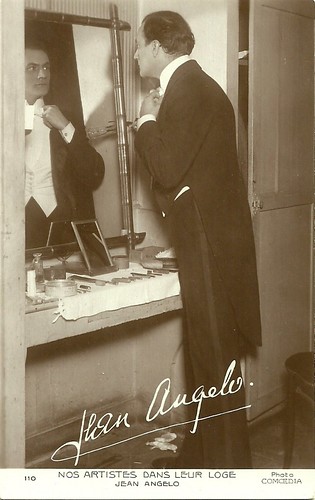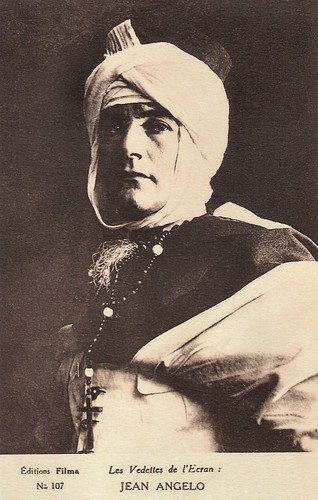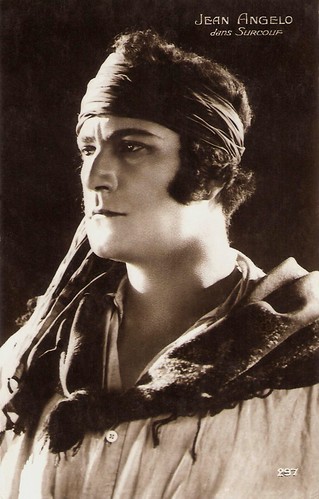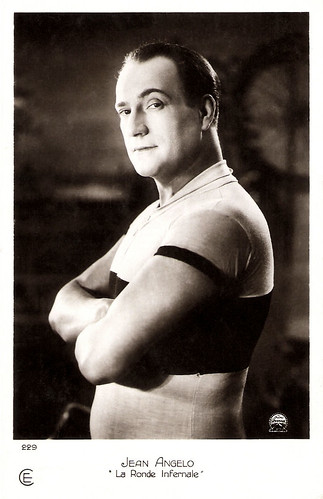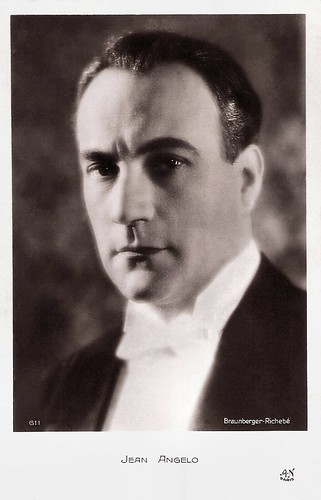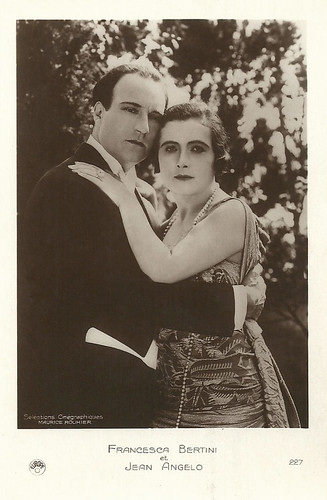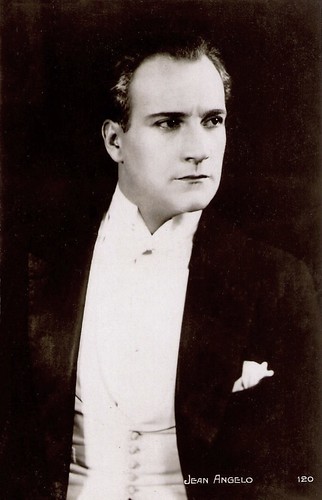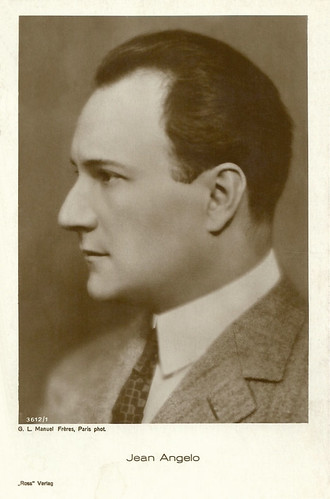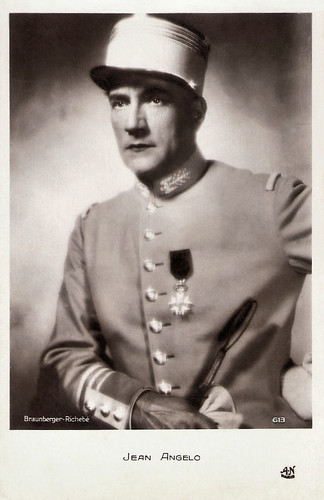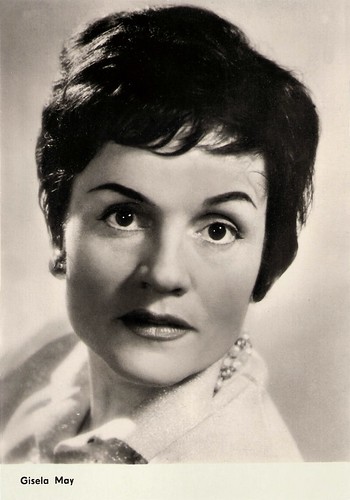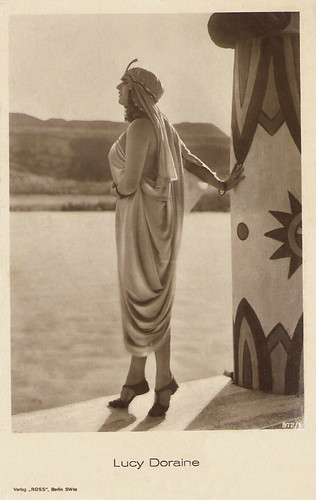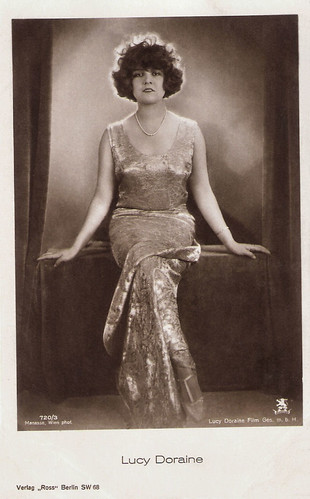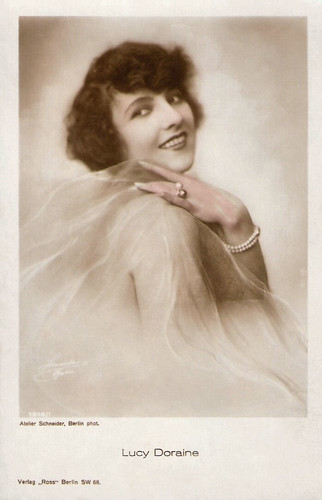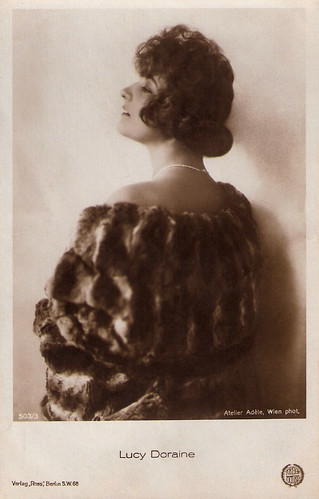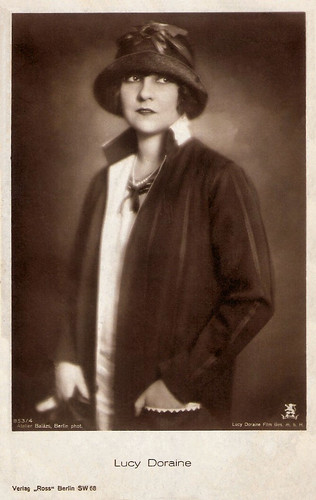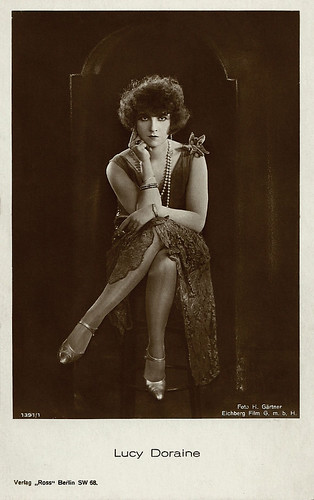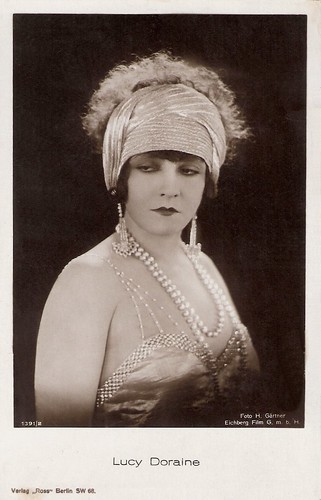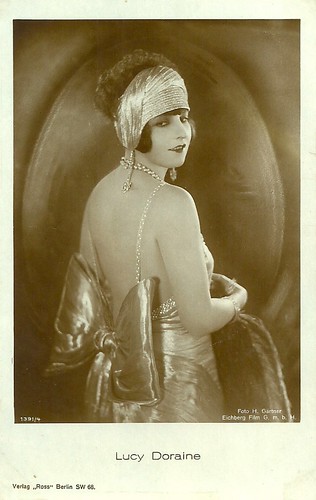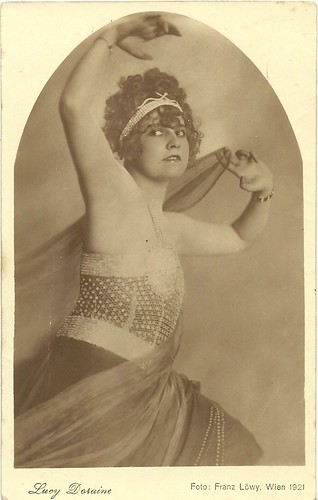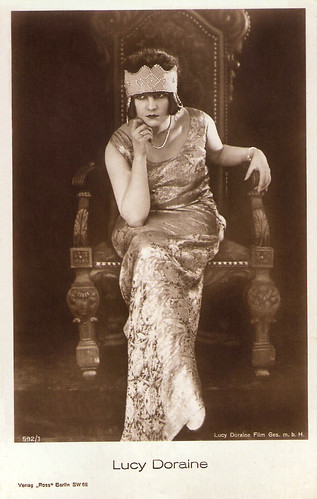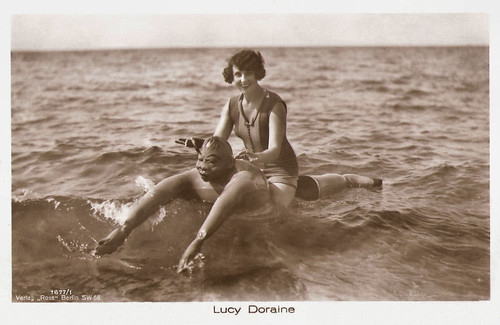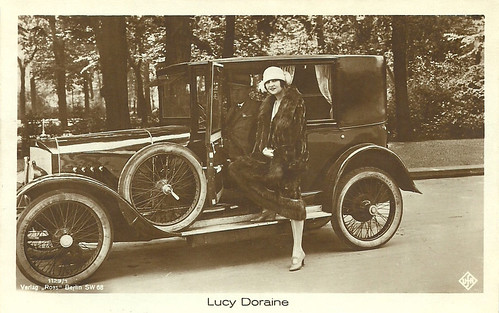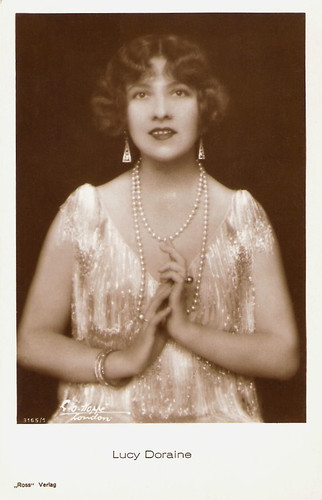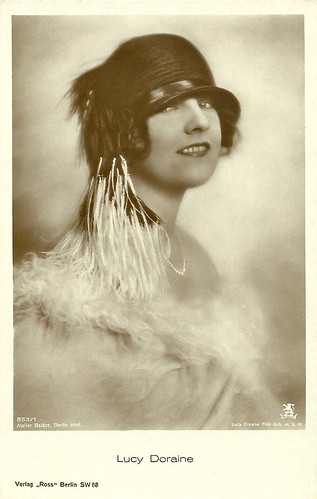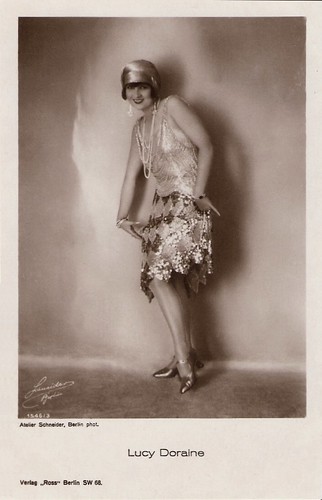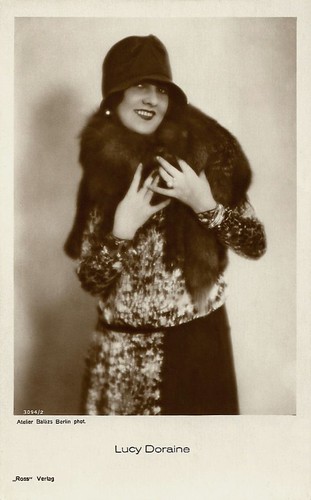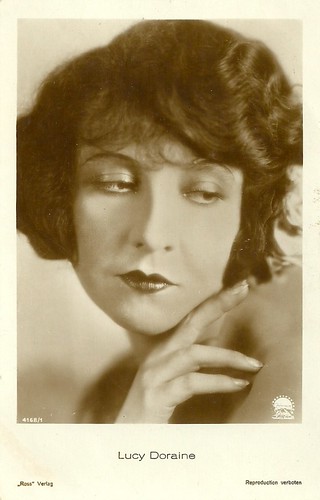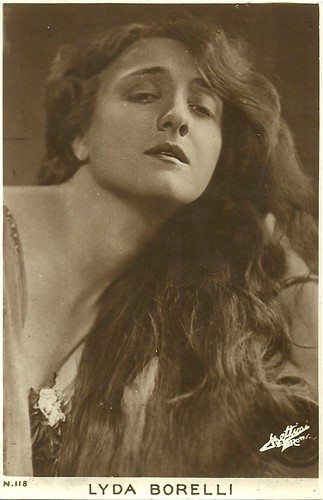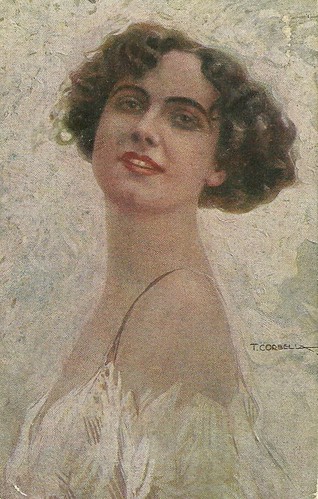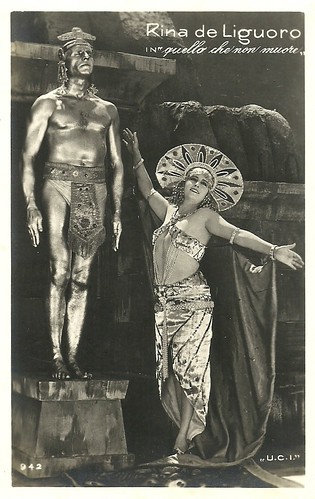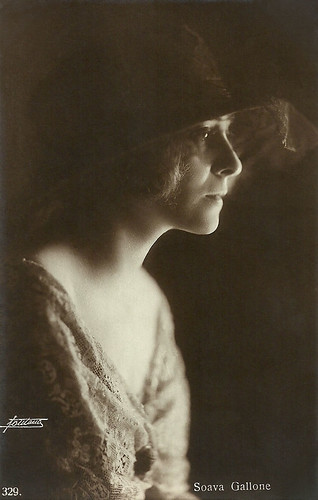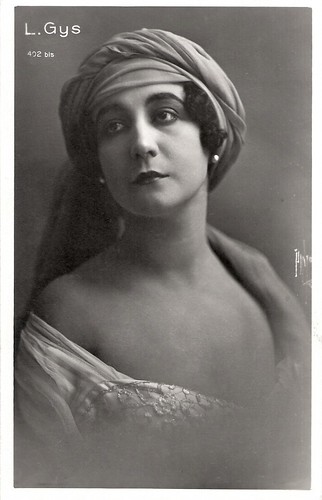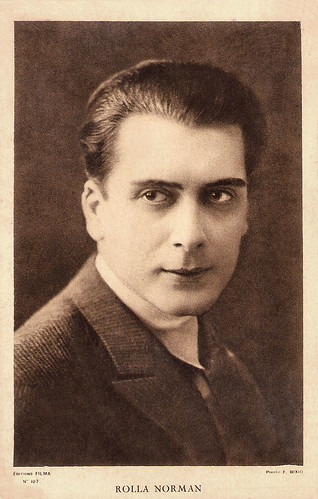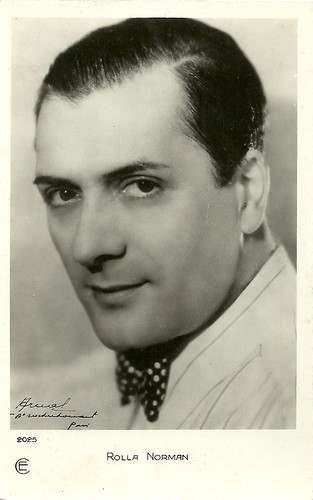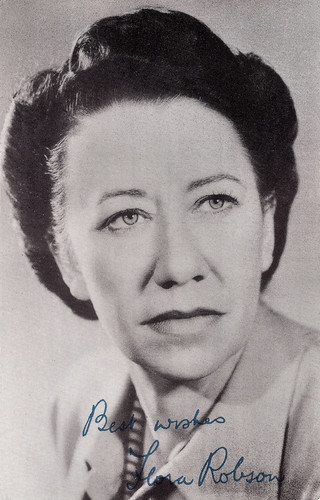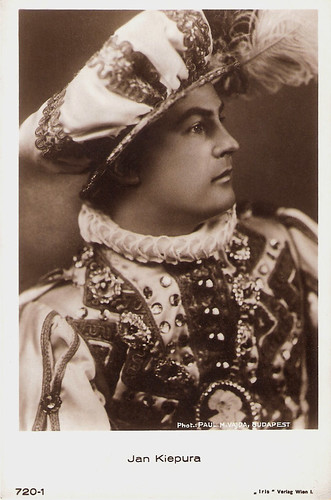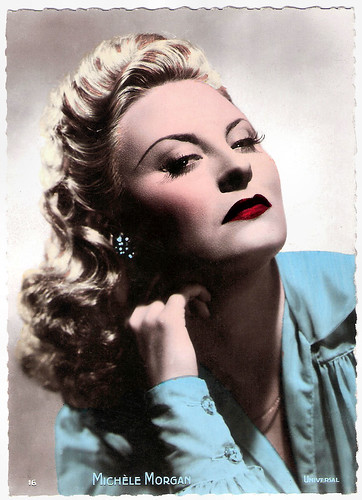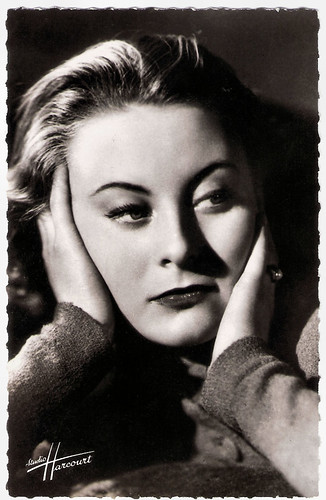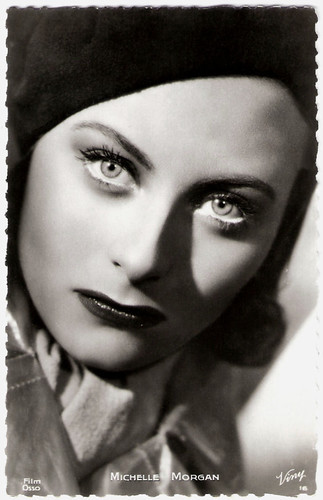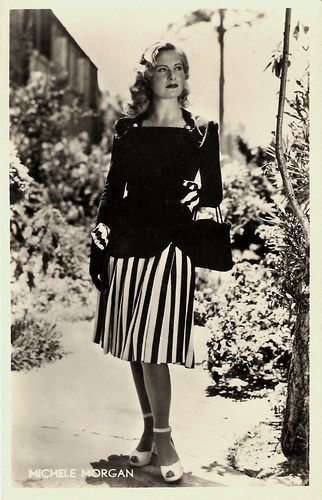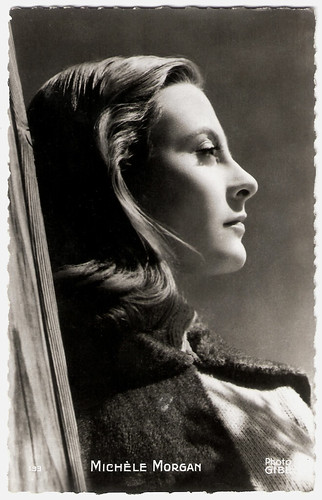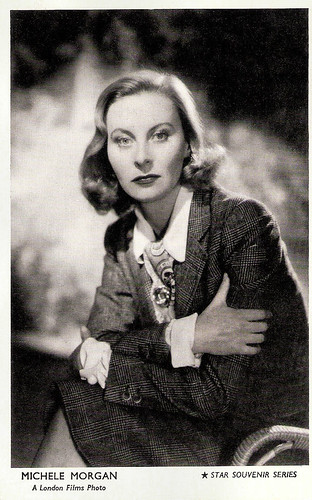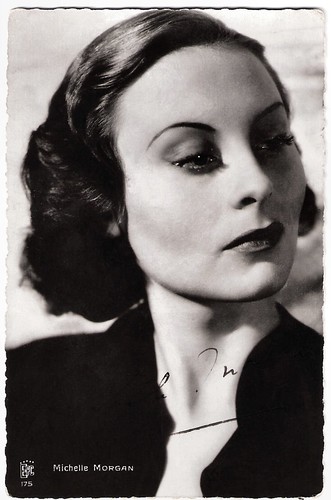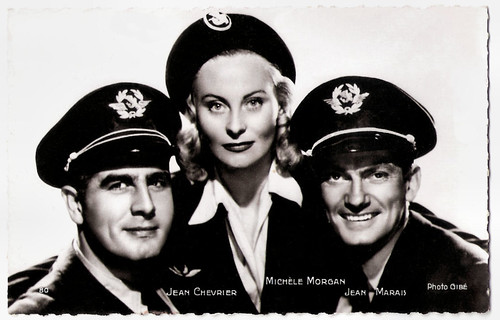American film, stage and television actor Joseph Cotten (1905-1994) achieved prominence on Broadway, starring in the original stage productions of The Philadelphia Story and Sabrina Fair. He first gained worldwide fame in the Orson Welles films Citizen Kane (1941), The Magnificent Ambersons (1942), and Journey into Fear (1943), for which Cotten was also credited with the screenplay. He went on to become one of the leading Hollywood actors of the 1940s, appearing in films such as Hitchcock's Shadow of a Doubt (1943), Duel in the Sun (1946) and the British classic The Third Man (1949).
![Joseph Cotten]()
Dutch postcard, no. 3067. Photo: RKO Radio Films.
![Joseph Cotten]()
Dutch postcard by Foto Archief Film en Toneel, no. 3335. Photo: RKO Radio Films.
![Joseph Cotten]()
Dutch postcard, no. 2419. Photo: RKO Radio Films.
Joseph Cheshire Cotten, Jr. was born in Petersburg, Virginia, in 1905 to a prosperous Southern family. He was the first of three sons of Joseph Cheshire Cotten, Sr., an assistant postmaster, and Sally Willson Cotten. At an early age, Joseph already showed a passion for story-telling, reciting, and performing acts for his family.
In 1923, when Cotten was 18, he went to Washington D.C. to study at the Hickman School of Expression and then moved to New York City in 1924 to make his way in the theatre world. This was tougher than Cotten had hoped. He ended up working as a shipping clerk for a year before heading south to Miami with friends. In Florida, Cotten supported himself with an odd assortment of jobs, including lifeguard, potato salad merchandiser and as a drama critic for the Miami Herald. That evidently led to appearance in plays at the Miami Civic Theater.
Through a connection at the Miami Herald he managed to land an assistant stage manager job in New York. In 1929 he was engaged for a season at the Copley Theatre in Boston, and there he was able to expand his acting experience, appearing in 30 plays. Cotten made his Broadway debut in 1930 and he began working on radio shows soon after. He also married pianist Lenore La Mont in 1931 and they remained together until her 1960 death.
On the cast of CBS Radio's The American School of the Air, Cotten met in 1934 Orson Welles and the two became friends. Welles regarded Cotten as a brilliant comic actor, and gave him the starring role in his Federal Theatre Project farce, Horse Eats Hats (1936). In 1937, Cotten joined Orson Welles' Mercury Theatre company, where he took the lead in such plays as Shoemaker’s Holiday and Julius Caesar.
Cotten made his film debut in the short, Too Much Johnson (Orson Welles, 1938), a comedy based on William Gillette's 1890 play. The short was occasionally screened before or after Mercury productions, but never received an official release. It was considered lost until it surfaced in 2013.
Cotten appeared in the original Broadway production of The Philadelphia Story (1939–1940) as C. K. Dexter Haven opposite Katharine Hepburn's Tracy Lord. Cotten jumped off the radio and stage and onto the big screen in 1941, making his Hollywood feature debut in Welles’ film debut, Citizen Kane (Orson Welles, 1941). The epic, portrayed the life of a press magnate (played by Welles) who starts out as an idealist but eventually turns into a corrupt, lonely old man. Cotten played the role of Kane's best friend Jedediah Leland, eventually a drama critic for one of Kane's papers.
Cotten would find his finest roles in Welles’ films, and the pair followed Citizen Kane with another masterpiece, The Magnificent Ambersons (Orson Welles, 1942), and the Nazi-related thriller Journey Into Fear (Norman Foster, 1943), which was co-written by Cotten and Welles.
![Joseph Cotten]()
Belgian collectors card by De Beukelaer, Antwerp, no A 45. Photo: Warner Bros.
![Joseph Cotten]()
Small German collectors card by Greiling Sammelbilder, Serie E, no. 103. Photo: Paramount.
![Joseph Cotten]()
Italian postcard by Bromostampa, Milano, no. 83.
Joseph Cotten had a remarkable film career during the 1940s. He starred as a serial killer in Alfred Hitchcock's classic thriller Shadow of a Doubt (1943). He then played an eager police detective in the mystery thriller Gaslight (George Cukor, 1944) opposite Charles Boyer and Ingrid Bergman.
Producer David O. Selznick then launched him successfully as a romantic leading man. Cotten starred with Jennifer Jones in four films for Selznick International Pictures: the wartime domestic drama Since You Went Away (John Cromwell, 1944), the romantic drama Love Letters (William Dieterle, 1945), the box office hit Duel in the Sun (King Vidor, 1946), and the critically acclaimed Portrait of Jennie (William Dieterle, 1948), in which he played a melancholy artist who becomes obsessed with a girl who may have died many years before.
He reunited with Hitchcock in the British historical thriller Under Capricorn (Alfred Hitchcock, 1949) as an Australian landowner with a shady past. Another British classic is The Third Man (Carol Reed, 1949), in which Orson Welles also plays a pivotal role. Cotten portrays a writer of pulp fiction who travels to postwar Vienna to meet his friend Harry Lime (Welles). When he arrives, he discovers that Lime has died, and is determined to prove to the police that it was murder, but uncovers an even darker secret.
Coten then made a string of less high-profile roles in films such as the dark Civil War Western Two Flags West (Robert Wise, 1950), the Joan Fontaine romance September Affair (William Dieterle, 1950), and the Film Noir Niagara (Henry Hathaway, 1953) in which he played Marilyn Monroe’s jealous husband. He also had a brief role as a member of the Roman Senate in Orson Welles’ The Tragedy of Othello: The Moor of Venice (1951). On Broadway, Cotten created the role of Linus Larrabee, Jr., in the original 1953 production of Sabrina Fair, opposite Margaret Sullavan.
His film career floundered and Cotten found a new home on TV. He appeared on such shows as Alfred Hitchcock Presents and hosting The 20th Century-Fox Hour and The Joseph Cotten Show. In the cinema, Cotten had an uncredited cameo in Welles’ Touch of Evil (Orson Welles, 1958) and a starring role in the film adaptation of Jules Verne's From the Earth to the Moon (Byron Haskin, 1958).
During the 1960s and 1970s, he appeared in a long array of TV and film projects. His most memorable films include the horror classic Hush… Hush, Sweet Charlotte (Robert Aldrich, 1964), with Bette Davis and Olivia de Havilland, The Money Trap (Burt Kennedy, 1965), the war film Tora! Tora! Tora! (Richard Fleischer, Toshio Masuda and Kinji Fukasaku, 1970), the British horror film The Abominable Dr. Phibes (Robert Fuest, 1971) featuring Vincent Price, the Italian horror film La Figlia di Frankenstein/Lady Frankenstein (Mel Welles, 1971) starring Rosalba Neri, The Science Fiction thriller Soylent Green (Richard Fleischer, 1973) and the all-star disaster film Airport '77 (Jerry Jameson, 1977).
One of Cotten's last films was the epic flop Heaven's Gate (Michael Cimino. 1980). An on-and-off writer, Cotten published his autobiography, Vanity Will Get You Somewhere (1987), just a few years after suffering a stroke and heart attack. Joseph Cotten died of pneumonia in Los Angeles in 1994. He was survived by his second wife, British actress Patricia Medina.
![Joseph Cotten]()
French postcard by Editions P.I., Paris, offered by Les Carbones Korès, no. 343, 1953. Photo: Warner Bros.
![Joseph Cotten and Shirley Temple in I'll Be Seeing You (1944)]()
Dutch postcard by J. Sleding N.V., Amsterdam, no. 31 HL. Photo: Nederland Film. Publicity still for I'll Be Seeing You (William Dieterle, 1944) with Shirley Temple.
![The Third Man]()
Publicity still of Alida Valli and Joseph Cotten in The Third Man (1949). Collection: Doctor Macro's.
Sources: Biography.com, Wikipedia and IMDb.

Dutch postcard, no. 3067. Photo: RKO Radio Films.

Dutch postcard by Foto Archief Film en Toneel, no. 3335. Photo: RKO Radio Films.

Dutch postcard, no. 2419. Photo: RKO Radio Films.
A brilliant comic actor
Joseph Cheshire Cotten, Jr. was born in Petersburg, Virginia, in 1905 to a prosperous Southern family. He was the first of three sons of Joseph Cheshire Cotten, Sr., an assistant postmaster, and Sally Willson Cotten. At an early age, Joseph already showed a passion for story-telling, reciting, and performing acts for his family.
In 1923, when Cotten was 18, he went to Washington D.C. to study at the Hickman School of Expression and then moved to New York City in 1924 to make his way in the theatre world. This was tougher than Cotten had hoped. He ended up working as a shipping clerk for a year before heading south to Miami with friends. In Florida, Cotten supported himself with an odd assortment of jobs, including lifeguard, potato salad merchandiser and as a drama critic for the Miami Herald. That evidently led to appearance in plays at the Miami Civic Theater.
Through a connection at the Miami Herald he managed to land an assistant stage manager job in New York. In 1929 he was engaged for a season at the Copley Theatre in Boston, and there he was able to expand his acting experience, appearing in 30 plays. Cotten made his Broadway debut in 1930 and he began working on radio shows soon after. He also married pianist Lenore La Mont in 1931 and they remained together until her 1960 death.
On the cast of CBS Radio's The American School of the Air, Cotten met in 1934 Orson Welles and the two became friends. Welles regarded Cotten as a brilliant comic actor, and gave him the starring role in his Federal Theatre Project farce, Horse Eats Hats (1936). In 1937, Cotten joined Orson Welles' Mercury Theatre company, where he took the lead in such plays as Shoemaker’s Holiday and Julius Caesar.
Cotten made his film debut in the short, Too Much Johnson (Orson Welles, 1938), a comedy based on William Gillette's 1890 play. The short was occasionally screened before or after Mercury productions, but never received an official release. It was considered lost until it surfaced in 2013.
Cotten appeared in the original Broadway production of The Philadelphia Story (1939–1940) as C. K. Dexter Haven opposite Katharine Hepburn's Tracy Lord. Cotten jumped off the radio and stage and onto the big screen in 1941, making his Hollywood feature debut in Welles’ film debut, Citizen Kane (Orson Welles, 1941). The epic, portrayed the life of a press magnate (played by Welles) who starts out as an idealist but eventually turns into a corrupt, lonely old man. Cotten played the role of Kane's best friend Jedediah Leland, eventually a drama critic for one of Kane's papers.
Cotten would find his finest roles in Welles’ films, and the pair followed Citizen Kane with another masterpiece, The Magnificent Ambersons (Orson Welles, 1942), and the Nazi-related thriller Journey Into Fear (Norman Foster, 1943), which was co-written by Cotten and Welles.

Belgian collectors card by De Beukelaer, Antwerp, no A 45. Photo: Warner Bros.

Small German collectors card by Greiling Sammelbilder, Serie E, no. 103. Photo: Paramount.

Italian postcard by Bromostampa, Milano, no. 83.
A very popular romantic leading man
Joseph Cotten had a remarkable film career during the 1940s. He starred as a serial killer in Alfred Hitchcock's classic thriller Shadow of a Doubt (1943). He then played an eager police detective in the mystery thriller Gaslight (George Cukor, 1944) opposite Charles Boyer and Ingrid Bergman.
Producer David O. Selznick then launched him successfully as a romantic leading man. Cotten starred with Jennifer Jones in four films for Selznick International Pictures: the wartime domestic drama Since You Went Away (John Cromwell, 1944), the romantic drama Love Letters (William Dieterle, 1945), the box office hit Duel in the Sun (King Vidor, 1946), and the critically acclaimed Portrait of Jennie (William Dieterle, 1948), in which he played a melancholy artist who becomes obsessed with a girl who may have died many years before.
He reunited with Hitchcock in the British historical thriller Under Capricorn (Alfred Hitchcock, 1949) as an Australian landowner with a shady past. Another British classic is The Third Man (Carol Reed, 1949), in which Orson Welles also plays a pivotal role. Cotten portrays a writer of pulp fiction who travels to postwar Vienna to meet his friend Harry Lime (Welles). When he arrives, he discovers that Lime has died, and is determined to prove to the police that it was murder, but uncovers an even darker secret.
Coten then made a string of less high-profile roles in films such as the dark Civil War Western Two Flags West (Robert Wise, 1950), the Joan Fontaine romance September Affair (William Dieterle, 1950), and the Film Noir Niagara (Henry Hathaway, 1953) in which he played Marilyn Monroe’s jealous husband. He also had a brief role as a member of the Roman Senate in Orson Welles’ The Tragedy of Othello: The Moor of Venice (1951). On Broadway, Cotten created the role of Linus Larrabee, Jr., in the original 1953 production of Sabrina Fair, opposite Margaret Sullavan.
His film career floundered and Cotten found a new home on TV. He appeared on such shows as Alfred Hitchcock Presents and hosting The 20th Century-Fox Hour and The Joseph Cotten Show. In the cinema, Cotten had an uncredited cameo in Welles’ Touch of Evil (Orson Welles, 1958) and a starring role in the film adaptation of Jules Verne's From the Earth to the Moon (Byron Haskin, 1958).
During the 1960s and 1970s, he appeared in a long array of TV and film projects. His most memorable films include the horror classic Hush… Hush, Sweet Charlotte (Robert Aldrich, 1964), with Bette Davis and Olivia de Havilland, The Money Trap (Burt Kennedy, 1965), the war film Tora! Tora! Tora! (Richard Fleischer, Toshio Masuda and Kinji Fukasaku, 1970), the British horror film The Abominable Dr. Phibes (Robert Fuest, 1971) featuring Vincent Price, the Italian horror film La Figlia di Frankenstein/Lady Frankenstein (Mel Welles, 1971) starring Rosalba Neri, The Science Fiction thriller Soylent Green (Richard Fleischer, 1973) and the all-star disaster film Airport '77 (Jerry Jameson, 1977).
One of Cotten's last films was the epic flop Heaven's Gate (Michael Cimino. 1980). An on-and-off writer, Cotten published his autobiography, Vanity Will Get You Somewhere (1987), just a few years after suffering a stroke and heart attack. Joseph Cotten died of pneumonia in Los Angeles in 1994. He was survived by his second wife, British actress Patricia Medina.

French postcard by Editions P.I., Paris, offered by Les Carbones Korès, no. 343, 1953. Photo: Warner Bros.

Dutch postcard by J. Sleding N.V., Amsterdam, no. 31 HL. Photo: Nederland Film. Publicity still for I'll Be Seeing You (William Dieterle, 1944) with Shirley Temple.

Publicity still of Alida Valli and Joseph Cotten in The Third Man (1949). Collection: Doctor Macro's.
Sources: Biography.com, Wikipedia and IMDb.



